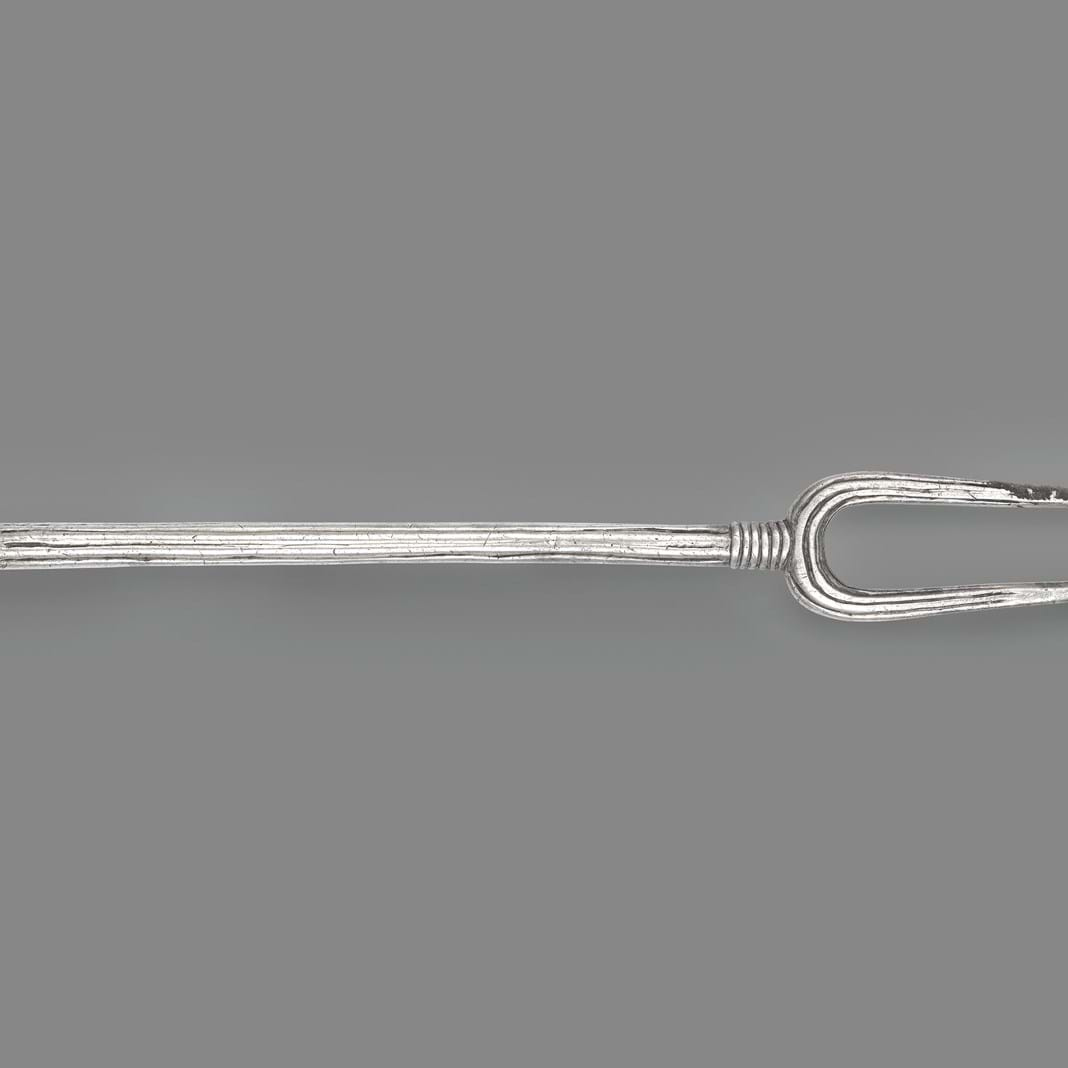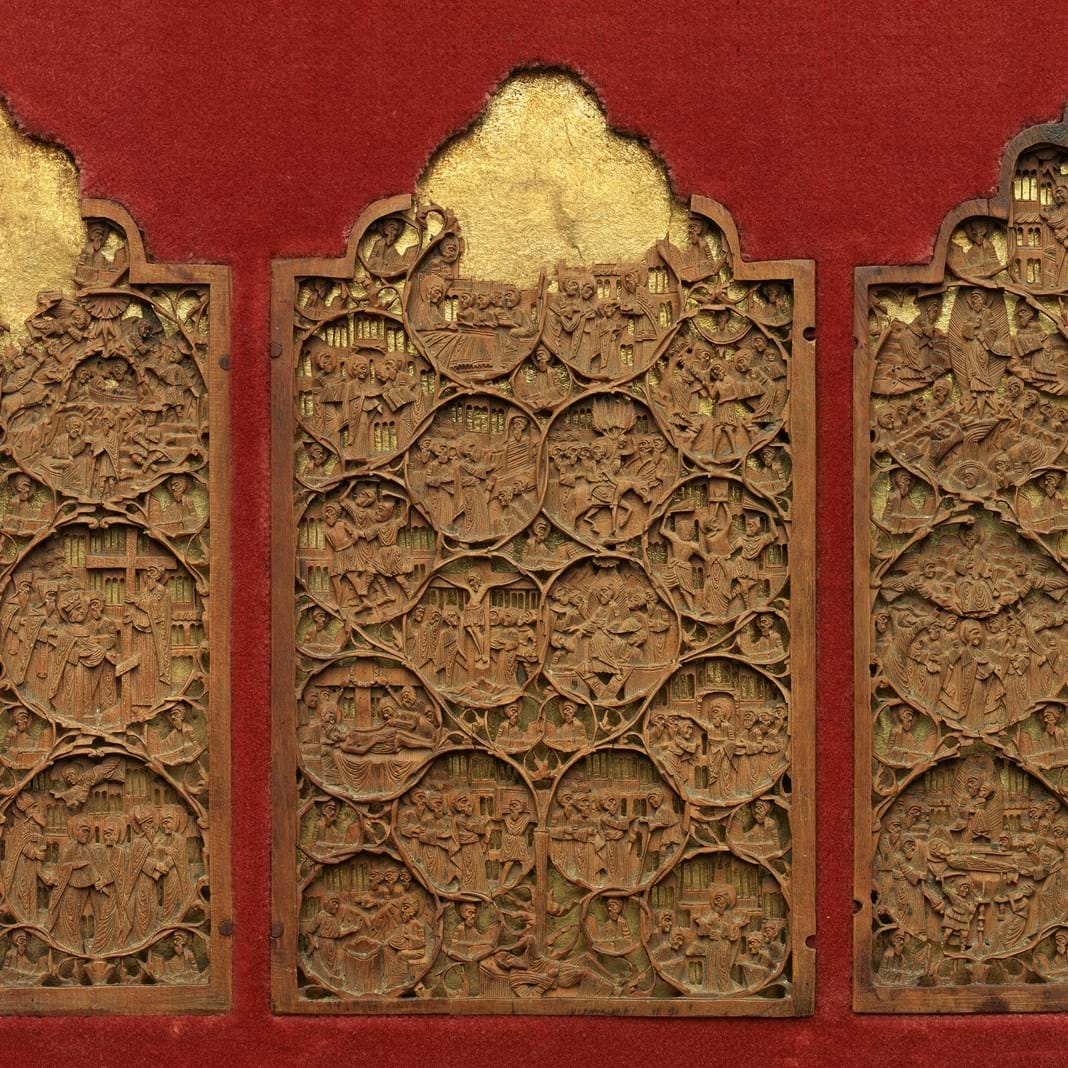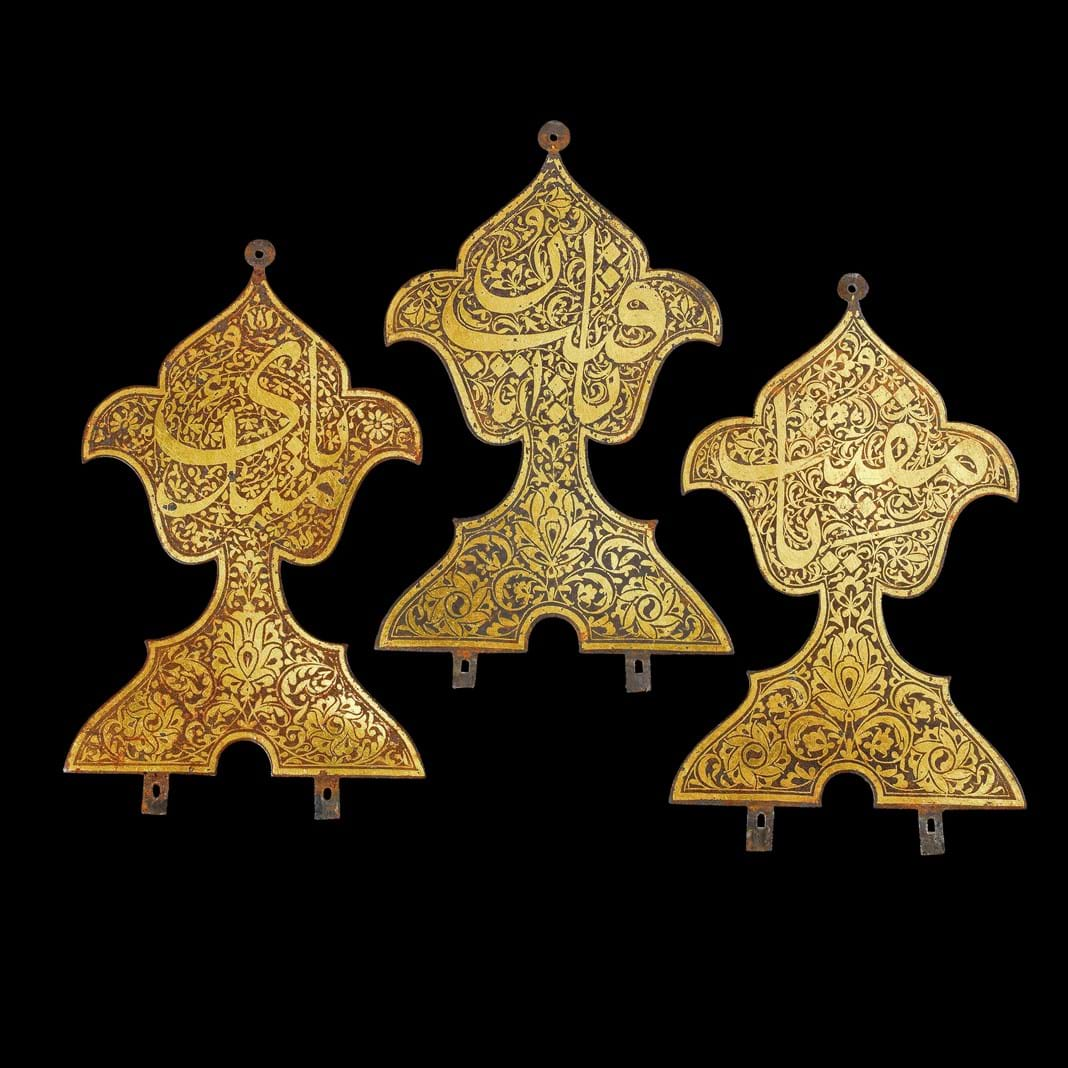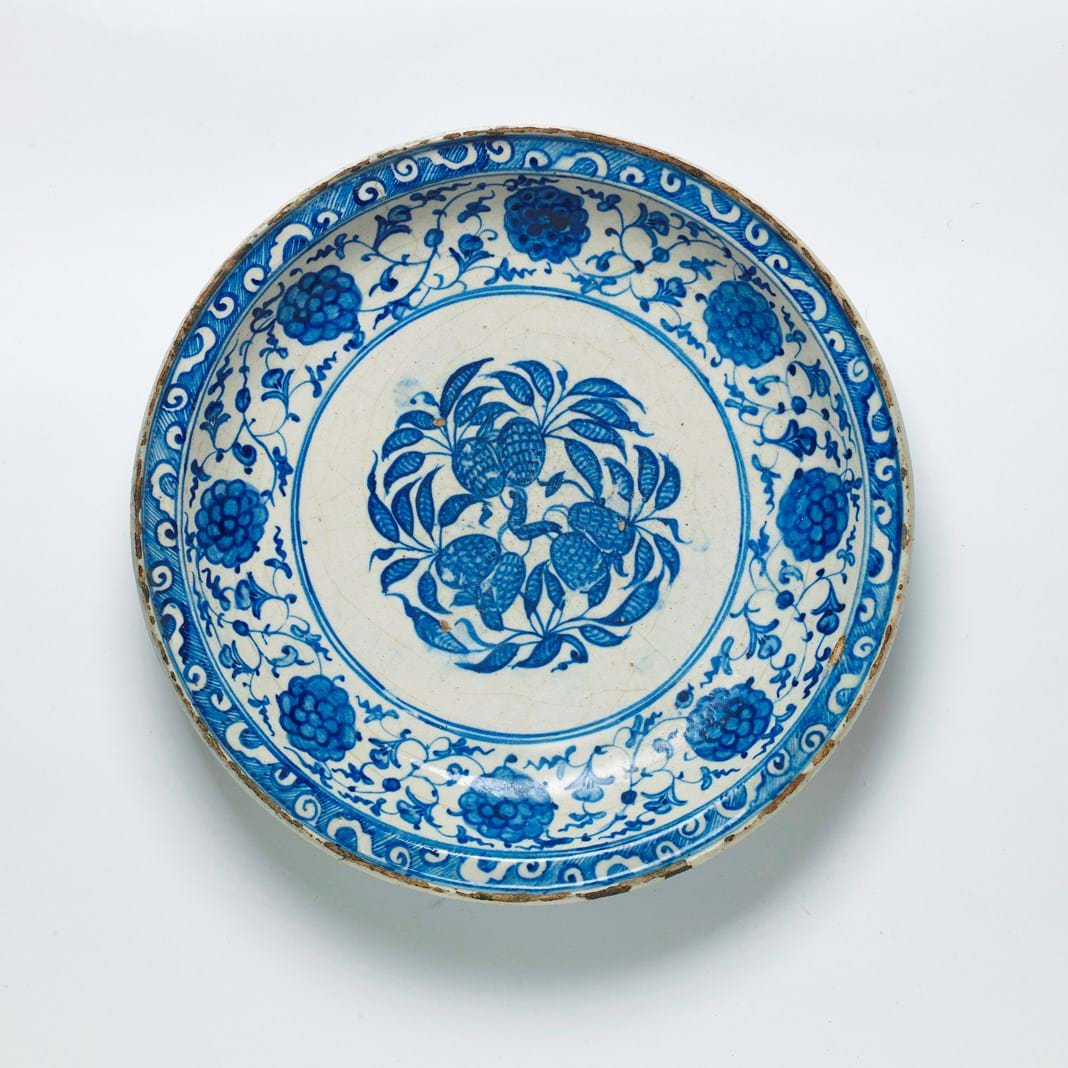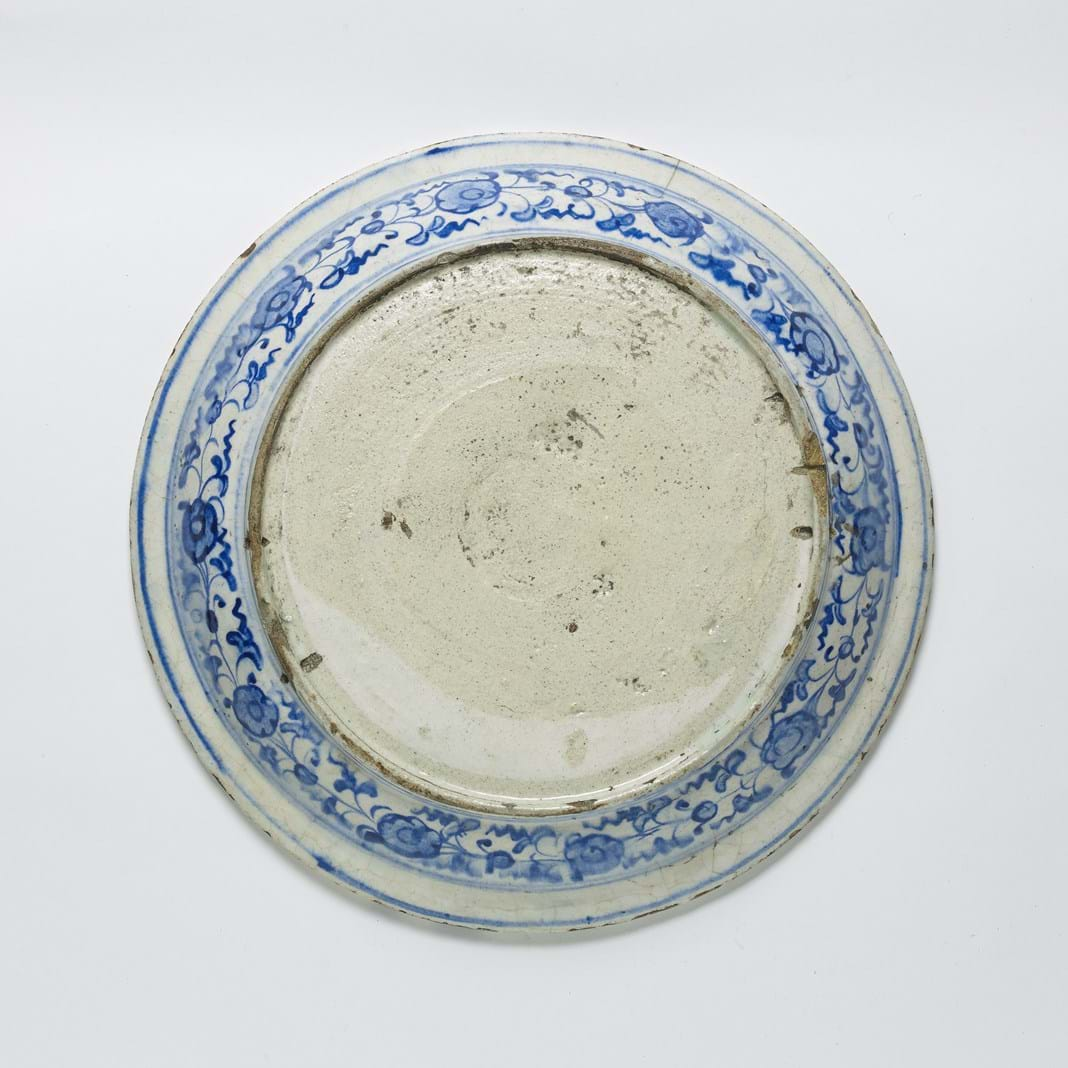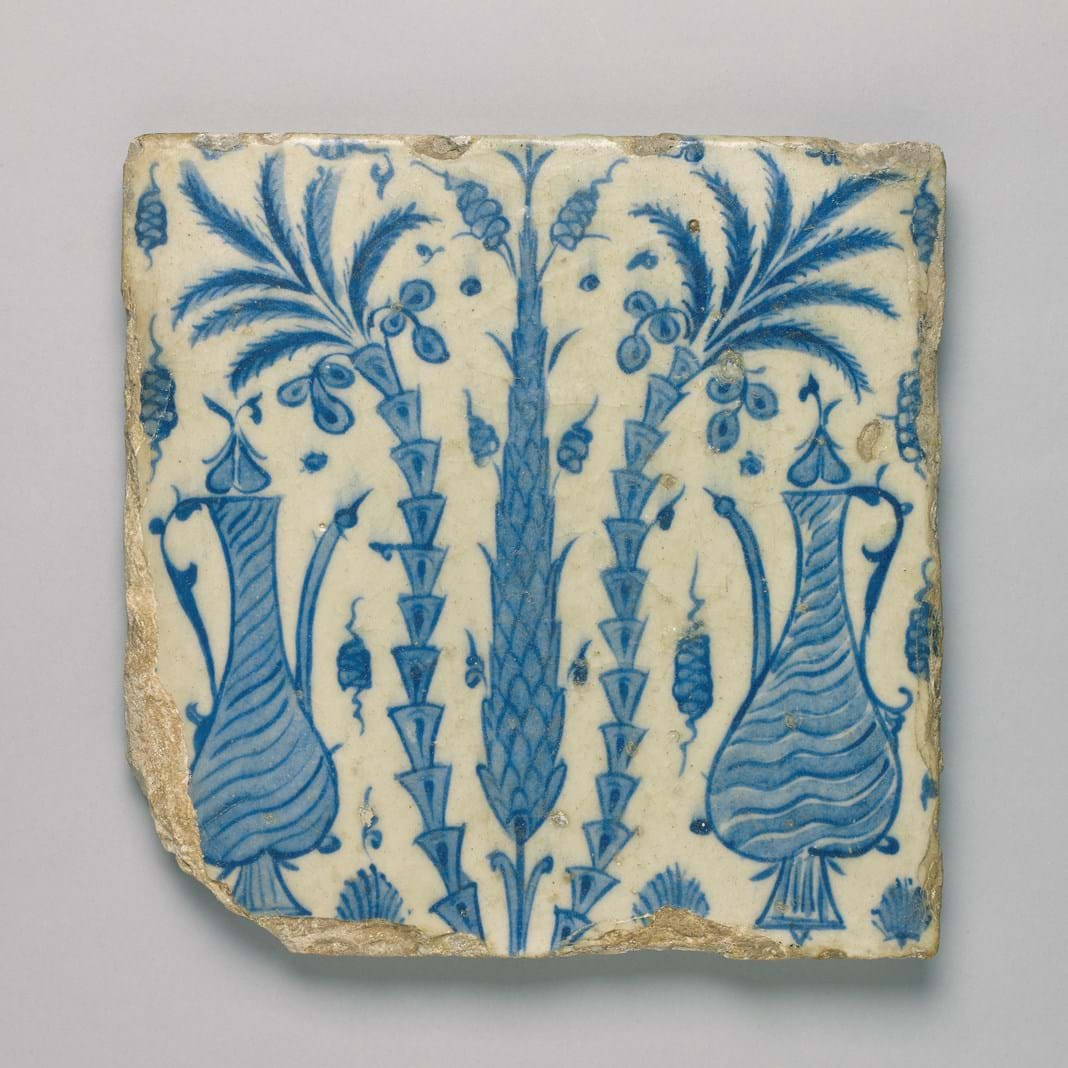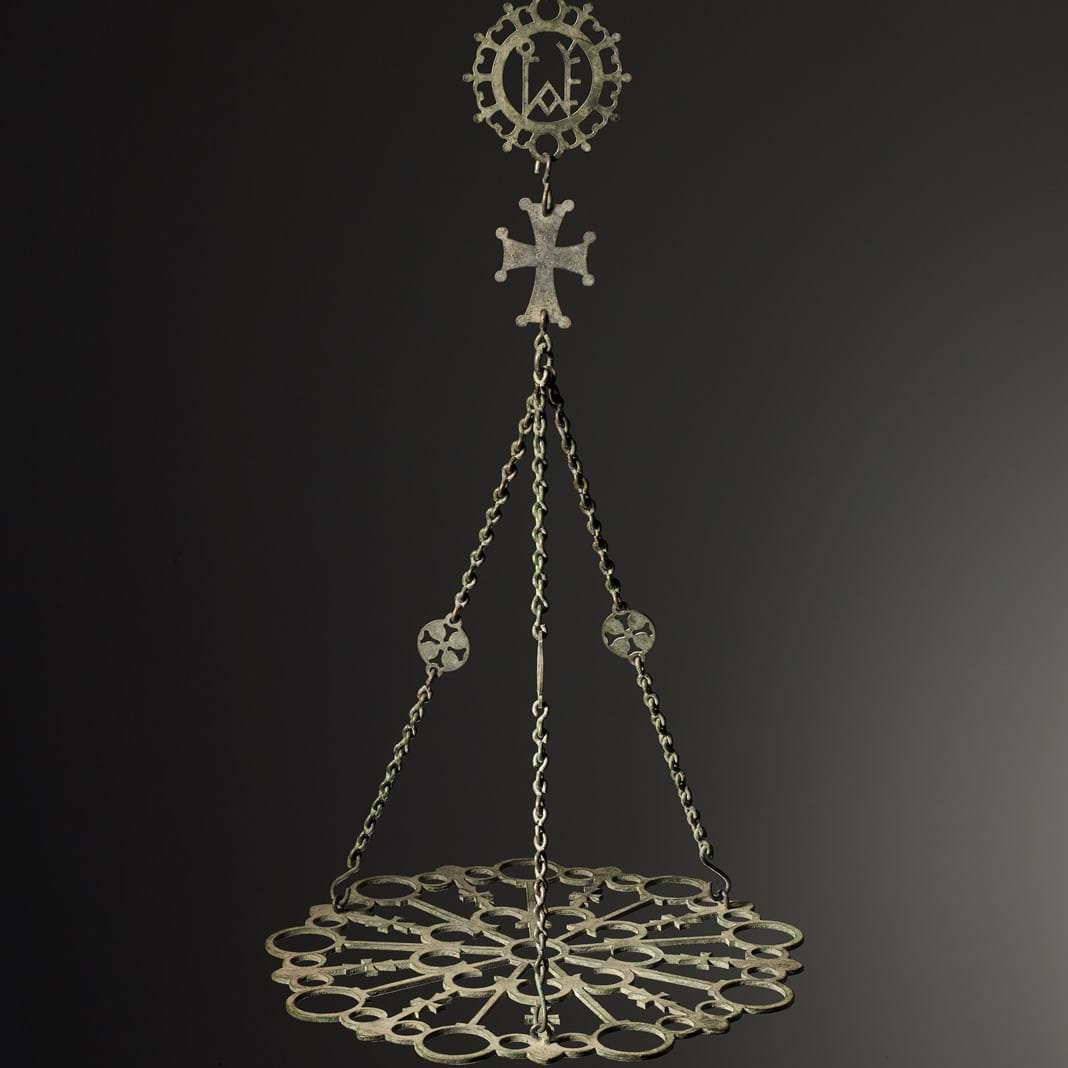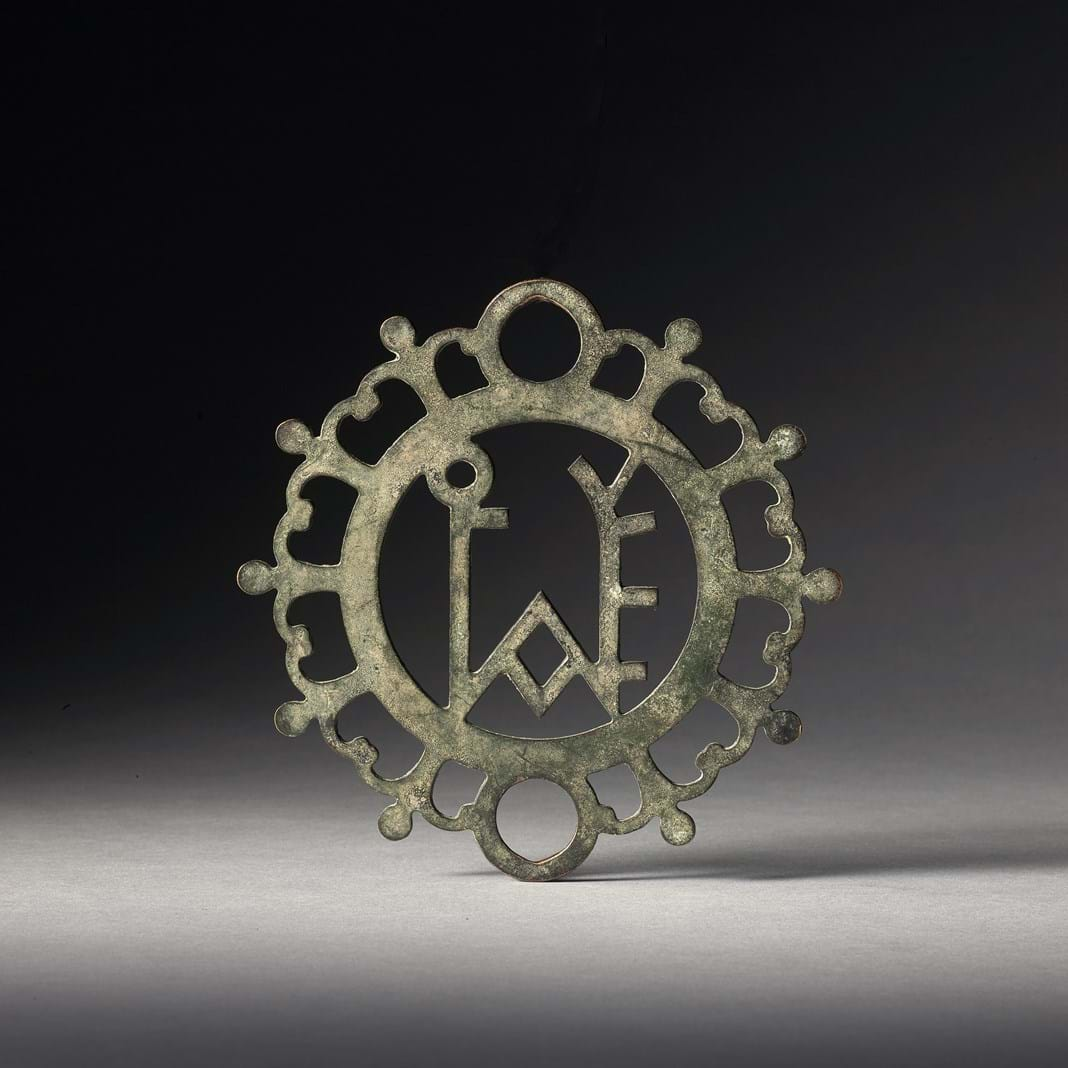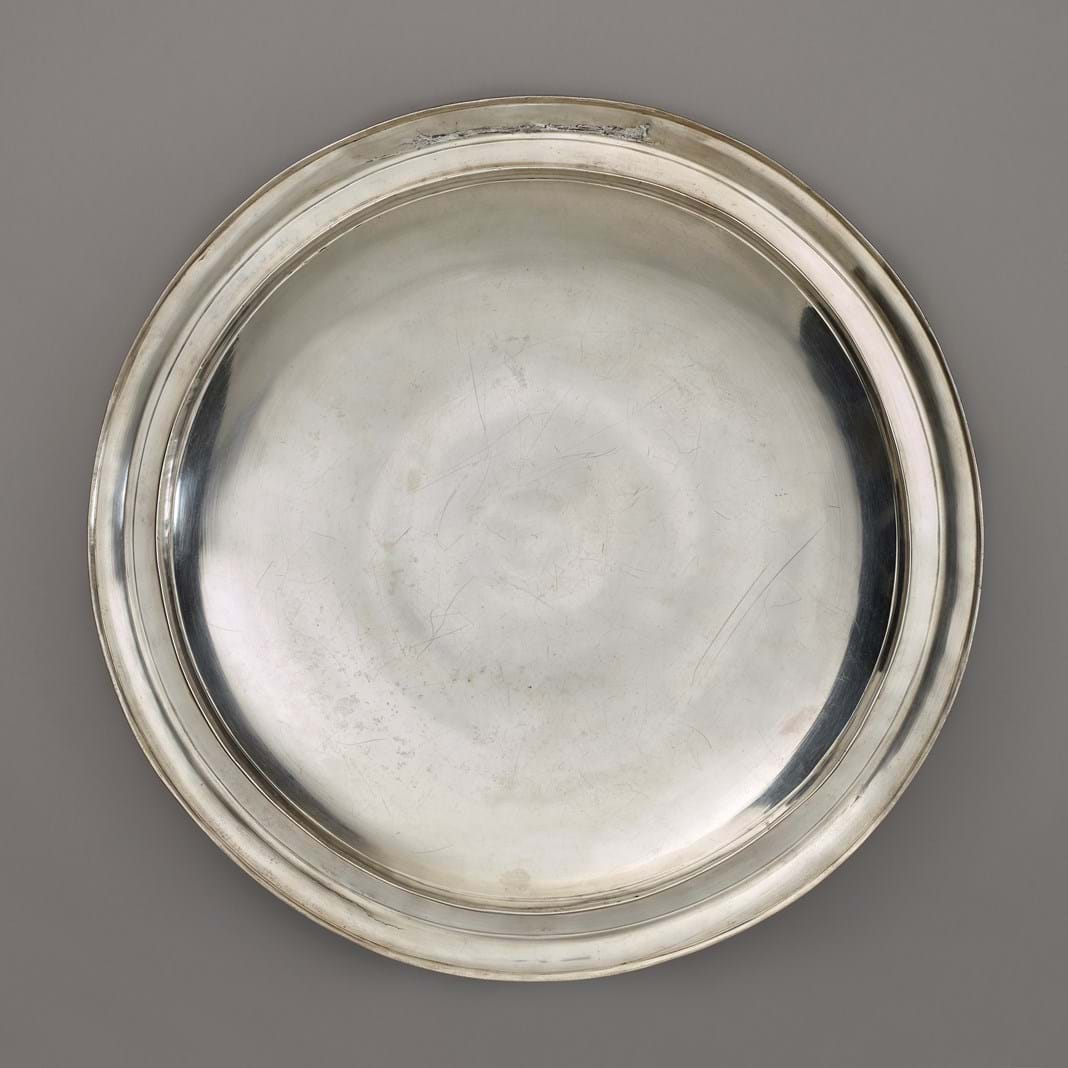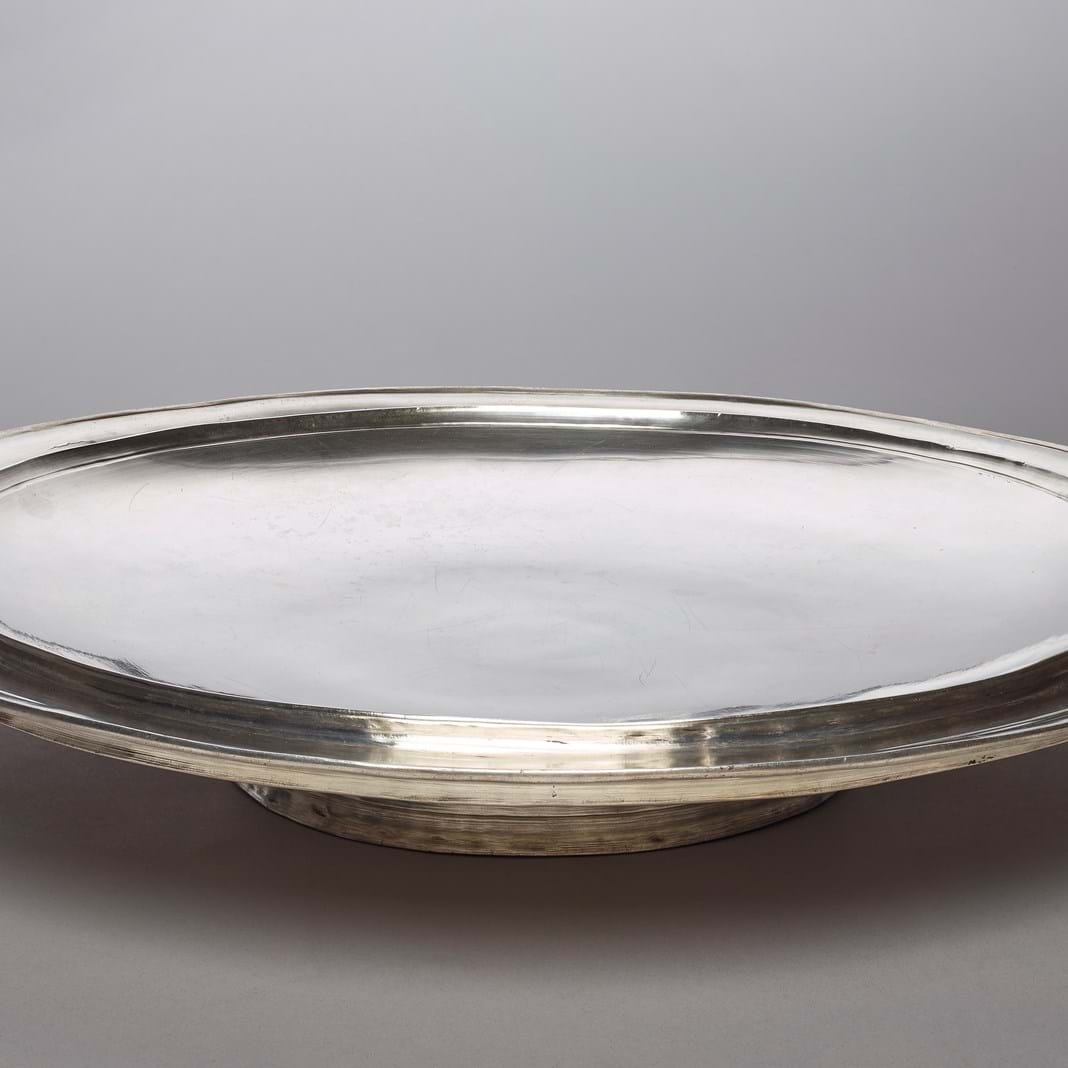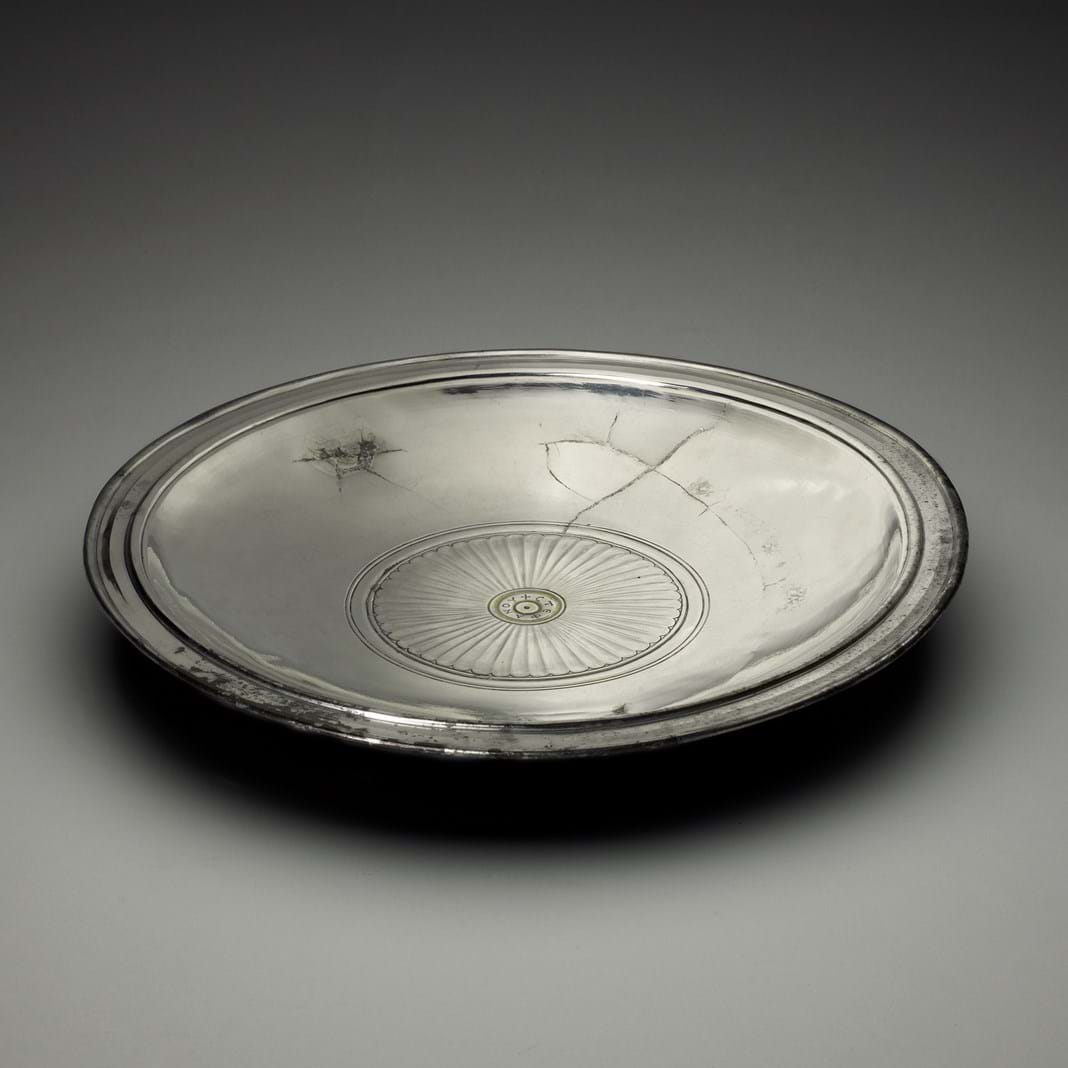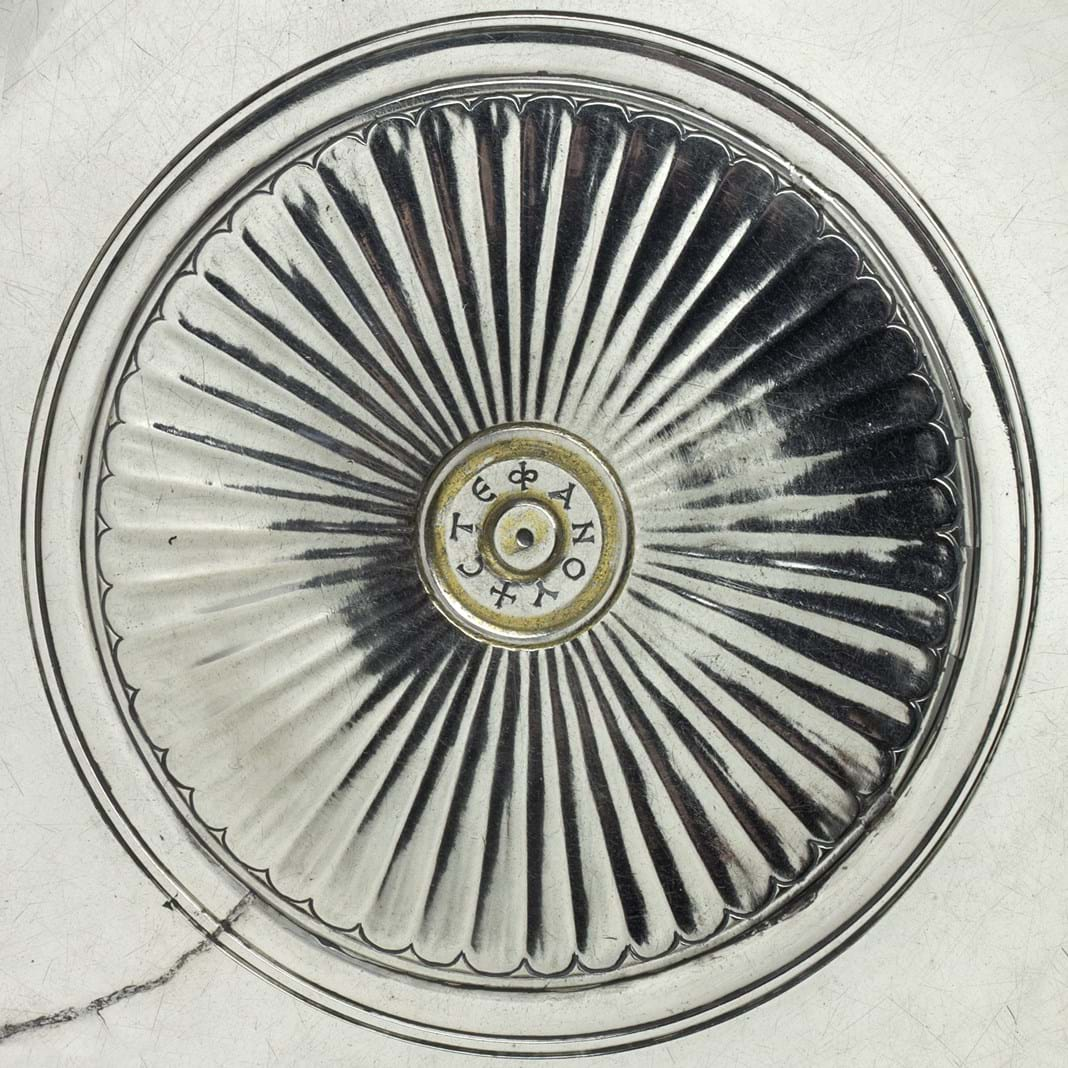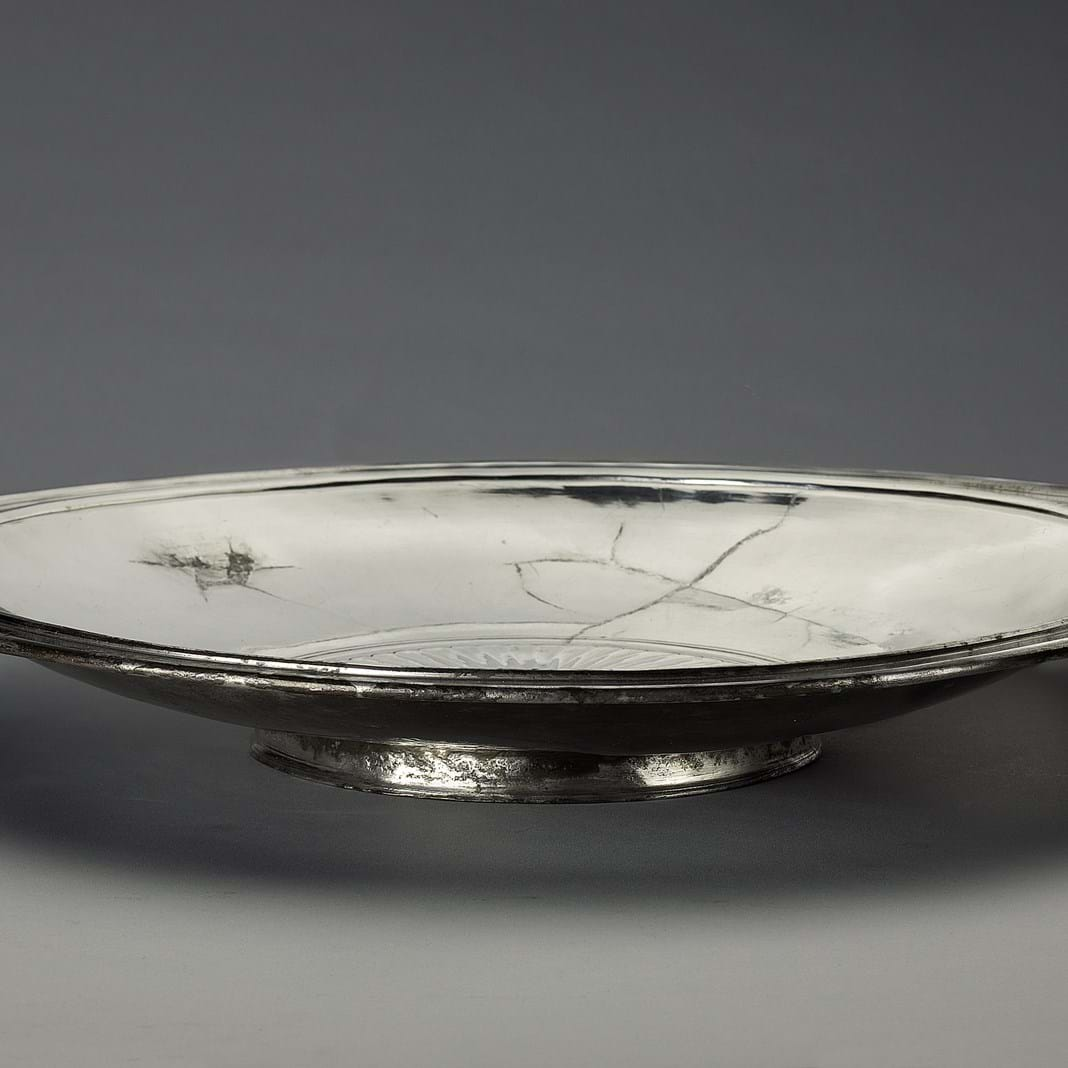Sasanian, two-tine silver fork
The tapering handle and the U-shaped forked element are of cylindrical section and longitudinally ribbed
Origin
Mesopotamia or Western Iran
Date
6th-7th century
Length: 18.3 cm
Weight: 51 g
Provenance
IR collection,1960-1980
IV collection,1980-2014
Acquired by AXIA in the London Trade (SS) 2016
Boxwood triptych with miniature carving in openwork
A veritable tour de force of woodcarving, the artist renders a multitude of Christian scenes in exquisite detail. The composition of the central panel is a variant of the Tree of Jesse. In its usual form on icons, the father of King David is shown resting on the ground having a vision of the ancestors of the Messiah appearing on the branches of a tree. Here the reclining man having a vision (indicated by the arm raised to his head) is shown wearing a monk’s cowl. His vision is altogether different from Jesse’s. The branches or roots his tree 'grow' like vines to form 16 intertwined round medallions illustrating events from the life and the passion of Christ. In the spaces between them are 15 smaller roundels with half-length figures of saints and/or Old Testament Prophets.
The scheme of large and small intertwined roundels is repeated on the wings—albeit on a larger scale—each with three Feast Days of the Orthodox Church calendar and seven small roundels with half-length figures between them. On the left, the Nativity, the Raising of the True Cross and the Visitation. On the right, the Transfiguration, the Ascension and the Dormition of the Mother of God. In the spandrels, split across the tip of the two wings, the artist placed the Annunciation; with the angel on the left wing (now missing) and the seated Virgin on the right.
The composition is without direct parallel in the iconographic canon, leading one to wonder who the reclining monk having the vision was. Perhaps he was none other than the Athonite master who created this masterpiece.
Origin
Mount Athos, Northern Greece
Date
ca 1700
Height: 12.20 cm
Width: 14.10 cm (all three panels)
Provenance
Dr Fischer Kunstauctionen, 08/11/2012, Icon sale, Lot 196
Acquired there by AXIA
Three gold-damascened steel trefoil finials
Each in the form of a trefoil with two attachment fittings on the bottom edge. Each inscribed with a name of God in Thuluth script against a scrolling floral vine; the lower section with a lotus flower and spinning blossoms among serrated saz leaves.
Origin
Ottoman Turkey, Istanbul
Date
ca. 1550
Height: 20.30 cm
Width: 12.30 cm
Provenance
Bonham's, Bond Street, Islamic sale, 07/10/2014, lot 108
Acquired there by AXIA
Exhibited / Published
Beauty and Belief, Crossing Bridges with the Arts of Islamic Culture, Bingham Young University Museum of Art, Provo, Utah, 24/4 to 29/9/2012
Large "Kubachi" blue & white pottery plate
The gently-sloping rim has a raised edge to hold a lid in place. The underglaze decoration is painted in shades of cobalt blue against a white background; the centre with a leafy floral spray; the cavetto with a frieze of rosettes & vines; the rim with a hatched wave and rock border.
Origin
Northern Persia (Azerbaijan)
Date
Early Safavid period, 16th century
Diameter: 35.5 cm
Provenance
Acquired by a Private Collector on the London market in the 1960s
Bonham's, Knightsbridge, 24/04/2002, lot 422
Acquired there by AXIA
Blue and white underglaze pottery tile with palm trees
Painted in cobalt blue against a white ground, the tile, of square shape, is decorated with a central cypress flanked by a pair of out-curving palm trees from which hang bunches of dates and a pair of confronting ewers.
In the minor details of the decoration one can find parallels to this piece in early pottery from Iznik thus providing a direct link between Mamluk and Ottoman pottery.
Origin
Mamluk Egypt or Syria
Date
1st half 15th century
Height: 25 cm
Width: 25 cm
Provenance
1970s Drouot auction, Paris (Boisgirard?)
Jacques Desenfans Collection, Brussels
Bonham's, Bond Street, 10/04/2008, lot 36
Acquired there by AXIA
Byzantine Bronze Polycandelon with Crosses and a Monogram
The suspension consists of an openwork roundel with a box-shaped monogram; below a cross pattée from which hang three long chains bisected with roundels cut out with cross motifs; the end of each chain is secured to a large disc cast in openwork in the form of a wheel with radiating spokes or a sun-burst with crosses to each arm. On the rim, nine receptacles for glass oil lamps (candelia).
When lit, these lamps cast beautiful shadows, magnifying the designs of this polycandelon on walls and floors. Much larger versions were used to light the great church of Hagia Sophia in Constantinople, which the poet and courtier Paul the Silentiary described in 563 AD: “Thus is everything clothed in beauty … no words are sufficient to describe the illumination in the evening: you might say that some nocturnal sun filled the majestic church with light.”
The box-shaped monogram in the roundel at the top probably gives the name of the polycandelon’s owner or perhaps of the church for which it was made. Resolving it depends on which letters one chooses to read in its stylised form. Among the possibilities:
A Γ Ε O C V (Euagous or Seauagou)
A Γ I Ε Λ O C V (Gelasiou or Oualagesou)
A Γ Γ Ε Λ O V (Angelou or Ageliou)
Origin
Eastern Mediterranean
Date
5th-7th century
Height: 73 cm
Weight: 2072 g
Provenance
From an old British private collection; formed between 1975 and 1985.
TimeLine Auctions, 23/05/2017, lot 368
Acquired there by AXIA
Plain silver charger with a stepped double-lipped rim
Of unprecedented form for which there are no parallels, the underside bears a single control stamp (as yet undeciphered).
Origin
Eastern Mediterranean
Date
Early Byzantine period; ca. 6th century
Height: 5.9 cm
Diameter: 37.5 cm
Weight: 1,904 g
Provenance
Private Collection, TS London
Acquired by AXIA 2016
The Stephanos Silver charger
The central, fluted roundel (‘print’) with a parcel-gilded inner ring inscribed in Greek + ΣΤΕΦΑΝΟΥ, ‘of Stephanos’, or ‘belonging to Stephanos’. Comparisons with other pieces suggest a 4th-century date for this large charger, a date which is indirectly corroborated by the absence of control stamps on it, a feature which first occurs during the reign of Emperor Zeno (r. 474 - 475 and 476 – 491)
FULL DESCRIPTION WITH ILLUSTRATION OF COMPARANDA FORTHCOMING
Date
Late Roman / Early Christian period; 4th-5th century
Diameter: 41 cm
Weight: 2,000 g
Provenance
Ex Private Collection KG, Wiesbaden, Germany
Acquired by AXIA 01/07/2014
